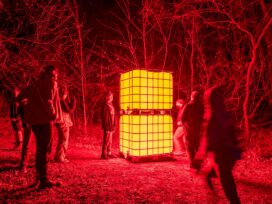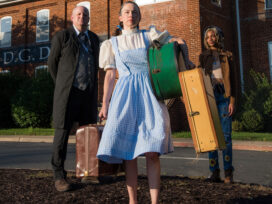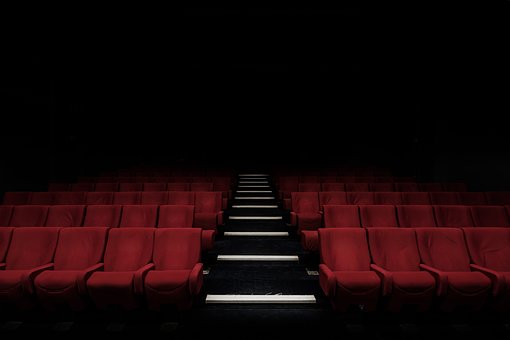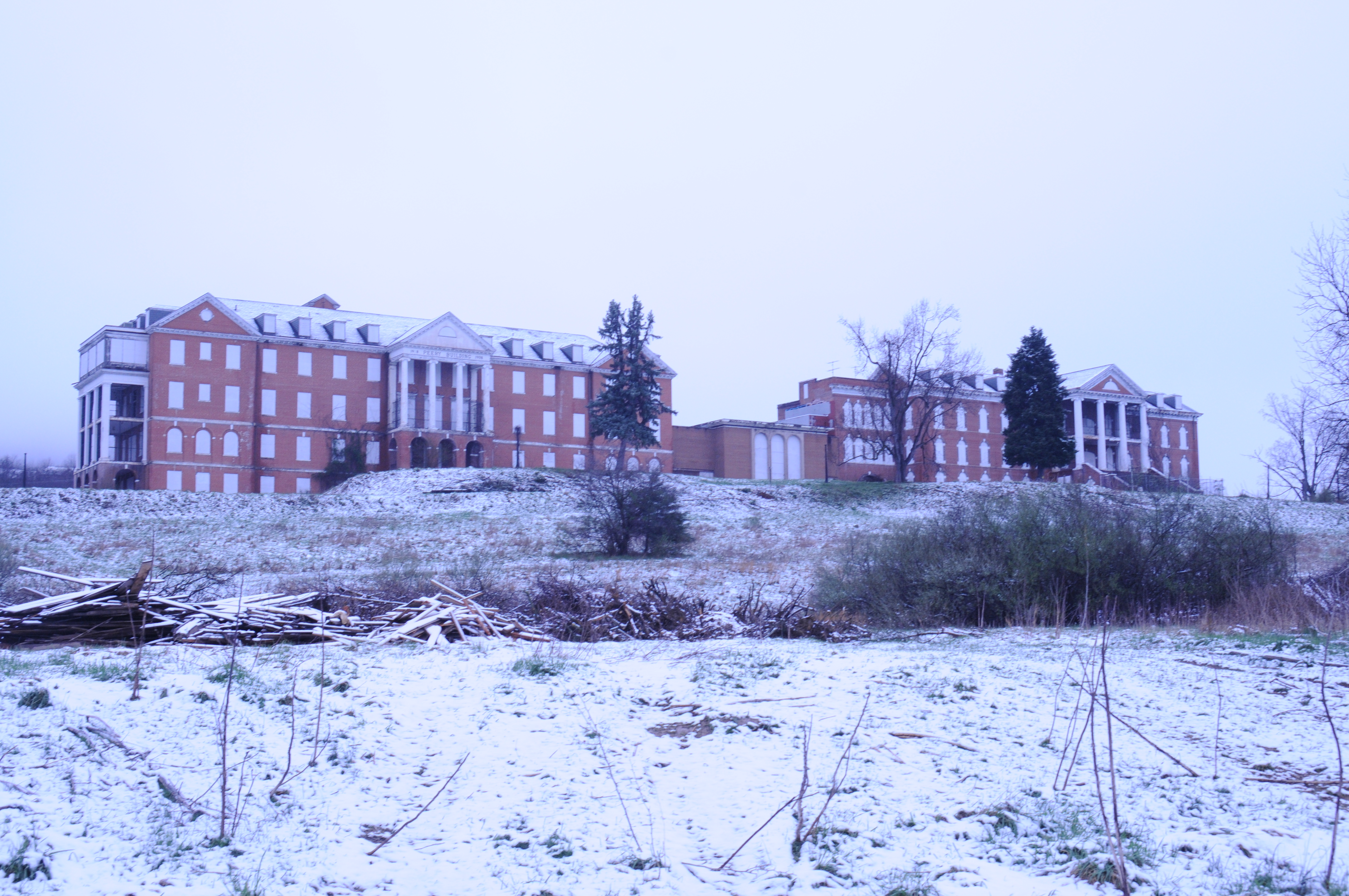
Ghosts of the Lost: What Secrets Lie Within DeJarnette Sanitarium
Joe Fowler, staff writer
Past and present blurred together in the dark halls of the abandoned house on the hill. The year was 2004. My friend encouraged me to take her on a tour of the DeJarnette building in Staunton, Virginia. I had been a patient at the DeJarnette Center as a teenager for several months in 1994, just two years before it closed in 1996.
In 2004 I saw the innards of a decaying building. Memories from 1994 appeared as flashbacks, distorting current reality. It was as though two points in history had converged, creating a single warped version of the present.
I pointed out the where and when of past events to my partner. She could only imagine the world she had entered. I, however, could nearly touch my own memories as though they were tangible. The tour was quite precise.
In one particular room on the third floor in the corner of the DeJarnette building, someone wrote a poem on the wall. The poem was by another patient. I realized I was not the only one the building called back.
I sought out others with less personal attachment to the building during the following years in order to gauge if the call was exclusive to former patients of the asylum.
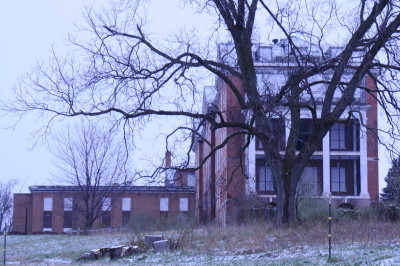
I remembered an exchange with Andy Deane, the lead singer of Bella Morte and horror writer. We discussed the building one day several years ago and talked about a potential visit. We never took that tour. I followed up with Deane in an interview recently to ask what he found so fascinating about the DeJarnette building.
“The place has a real haunting, imposing presence. And it’s made all the more fascinating by sitting at the edge of a major interstate. It has the look of something that would be forgotten in the middle of heavy woods,” he said, also adding that it would be a good place to film a horror movie.
Arif Vega, staff writer and photographer for the Forum, recently got a close up view of the DeJarnette building while working on an unrelated article. Vega ventured as far as the no trespassing signs would legally allow to photograph the building from every possible angle. Afterwards he said, “I wanted to go in.”
A simple google search revealed numerous websites either documenting or looking for more information on the building. Some claimed it was haunted. Others spoke of its dark past. One common concept connected these websites. Many sensed a deeper truth calling them from within the building. People longed for the unknown truth.
What Secrets Lie Within These Walls?
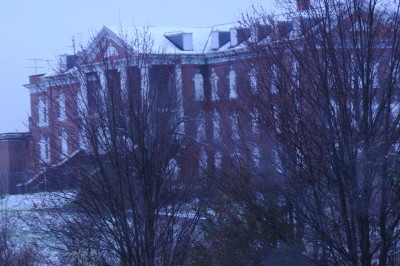
First known as DeJarnette Sanitarium, the institution opened in 1932 under the direction of Joseph DeJarnette, who also served as director of nearby Western State Hospital, according to News Virginian out of Waynesboro. In the ’70s, the sanitarium became a psychiatric facility for children and adolescents. The building now stands in view of more modern structures such as a hotel and a Sheetz at the bottom of the hill it stands upon.
When people feel inspired to google DeJarnette after gazing upon it, what do they find? They find a hidden history of Virginia, of America. Searching deeper still, those same people can find a loose connection to Nazi Germany’s quest for a master race through the practice of eugenics, a form of forced human sterilization passed into law by 32 US states during the 20th century, according to PBS.
A large portion of that history regards a practice known as eugenics, a practice that Joseph DeJarnette strongly supported. The truth behind eugenics is this: Virginia and many other states practiced forced human sterilization as a means to prevent individuals considered defective from procreating. This, in turn, would insure a stronger race of people since the best elements of society would be the only ones allowed to breed, according to an online exhibit on the UVA website.
Eugenics supporters targeted immigrants, single mothers, the poor, African-Americans, those with disabilities and the mentally ill. The federal government funded the movement, according to PBS.
If that sounds like something from Nazi Germany, it is because Germany adopted the Law for Protection Against Genetically Defective Offspring in 1933, 26 years after Indiana became the first state to pass eugenics laws in America in 1907, according to the UVA exhibit. The 1933 German law was one of the first measures taken to insure a master race.
The inspiration for Germany’s law was America, specifically the eugenics program in California, according to the San Francisco Chronicle. “If you look at the numbers of people from 1909 through 1950 sterilized in California, it’s something on the order of 19,000,” the Chronicle reported.
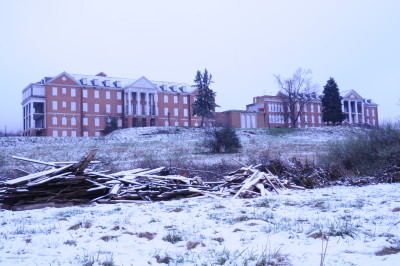
Adolf Hitler also credited the United States for inspiring the practice of eugenics in Germany by saying, “There is today one state in which at least weak beginnings toward a better conception [of citizenship] are noticeable. Of course, it is not our model German Republic, but the United States,” the LA Times reported.
Here in Virginia, within an hour drive of Charlottesville, Joseph DeJarnette, convinced the Virginia General Assembly to build DeJarnette Sanitarium with the philosophy of eugenics in mind, according to the News Virginian.
In regards to the adoption of eugenics laws by Germany, DeJanette said, “Germany in six years has sterilized about 80,000 of her unfit while the United States with approximately twice the population has only sterilized about 27,869 to January 1, 1938 in the past 20 years … The fact that there are 12,000,000 defectives in the US should arouse our best endeavors to push this procedure to the maximum.”
DeJarnette was not alone in his strong views against allegedly defective individuals. The Chicago Tribune reported that Supreme Court Justice Oliver Wendell Holmes once said, “It is better for all the world, if instead of waiting to execute degenerate offspring for crime, or to let them starve for their imbecility, society can prevent those who are manifestly unfit from continuing their kind.”
To understand the DeJarnette Center is to understand the past, and America’s part in it. In its later years, the center served to help young people who suffered from mental illness, an almost unspoken means of redeeming the institution from the sins of its namesake. Still, having spoken to some of the individuals who walked those halls both with and without me, DeJarnette left scars even until the end.
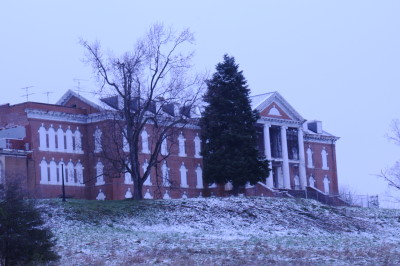
I remember the energy in that place from 1994, and how much stronger it was a decade later. Some wish to preserve the building. Others merely desire to walk those dark halls while the building stands if for no other reason than to experience it.
Some say the building is haunted. It is, but not necessarily by ghosts, but by the memories, experiences and emotions of nearly a century of the troubled and the sick, whether or not those individuals still live.
There are those who rally against an abandoned building standing out amongst the modern designs of today. The city of Staunton plans to demolish the DeJarnette building and replace it with stores and room for new businesses, according to NBC29.
Whether DeJarnette stands or falls, the past will remain to learn from. While the building remains, it stands to inspire a search for deeper understanding. If the building falls, many will miss it. There are those among that many who will continually search for the gushing wounds of America’s past in order to expose a history that they would rather not risk repeating.



